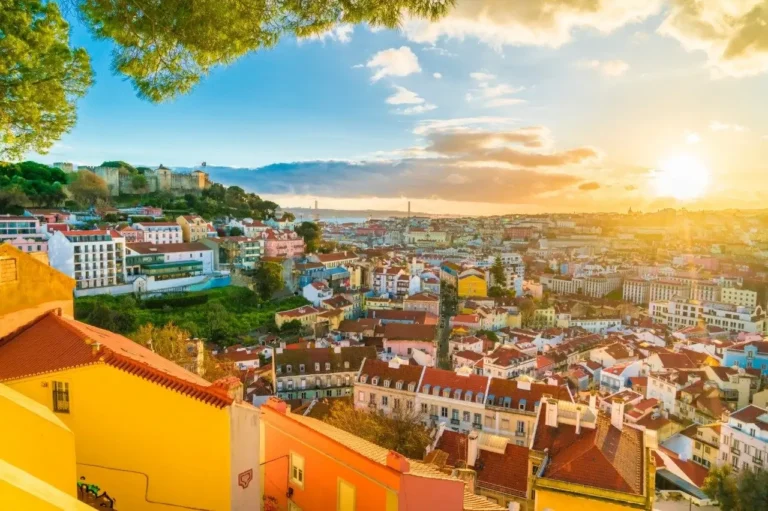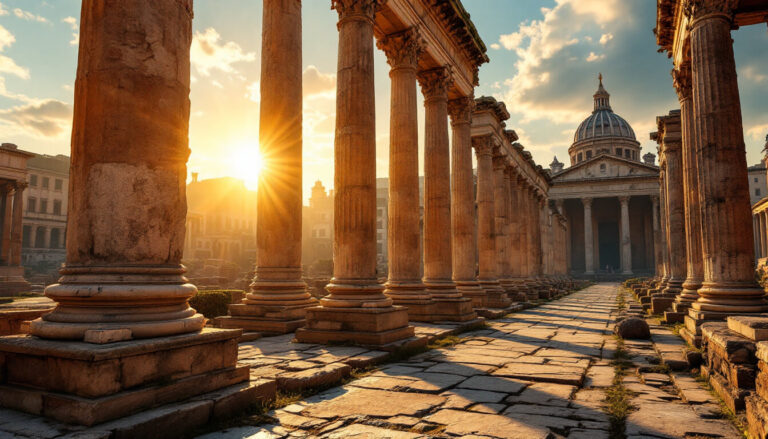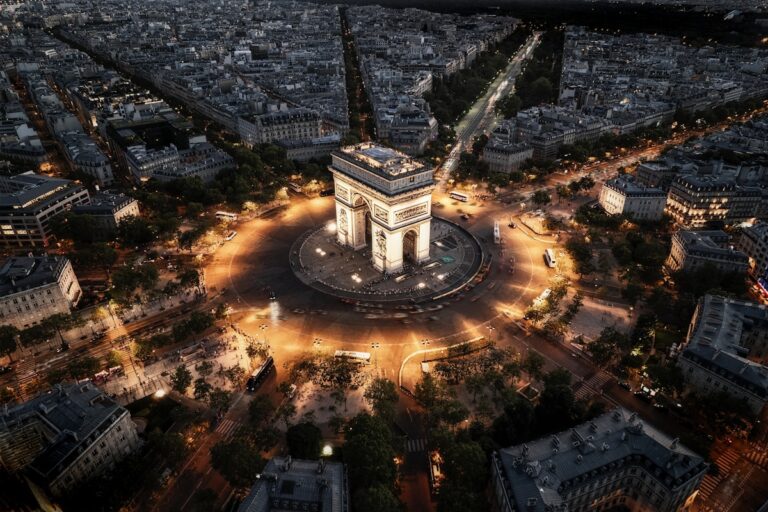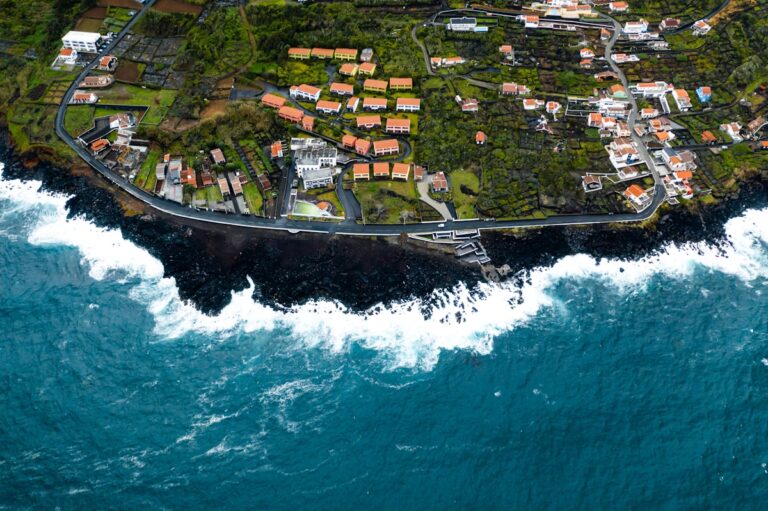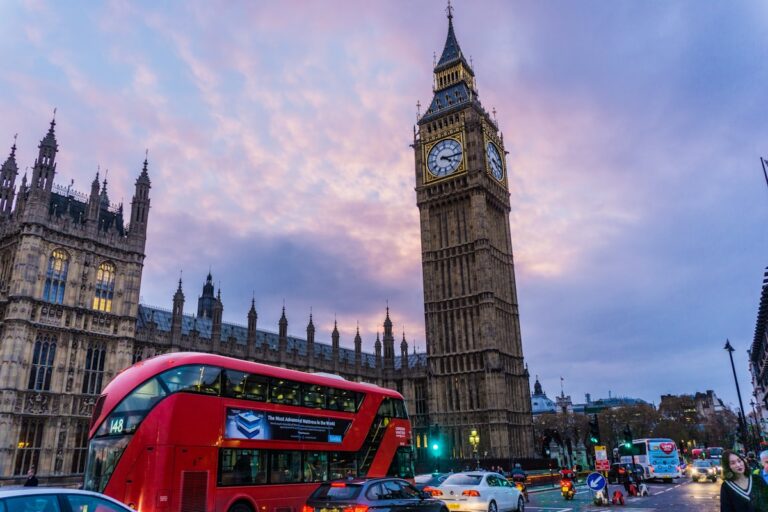Munich Travel: The Best Neighborhoods In Munich
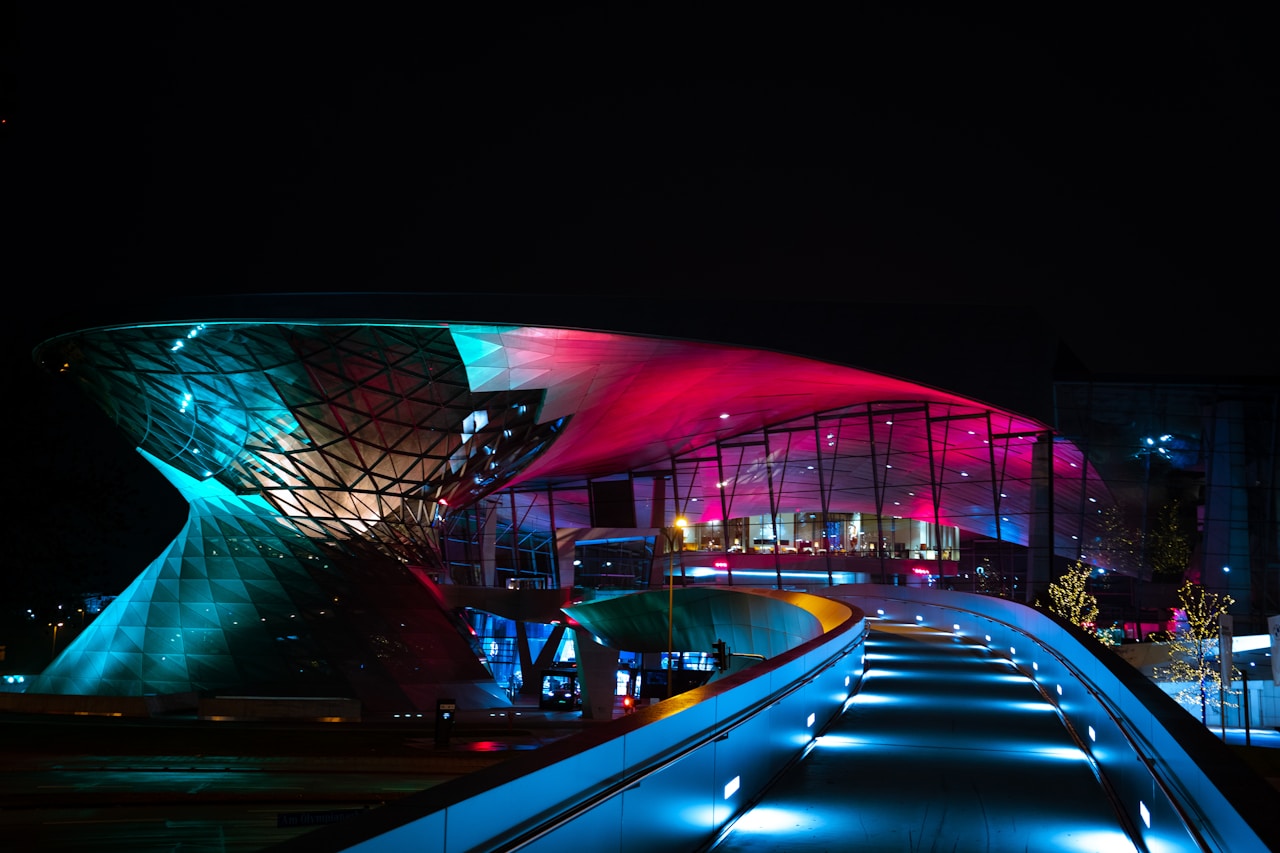
Munich offers diverse neighborhoods for every traveler. Altstadt-Lehel provides walkable access to historic landmarks and beer halls.
- Understanding the Layout of Munich
- Altstadt-Lehel: Staying in the Historic Center
- Maxvorstadt: Art, Academia, and Architecture
- Schwabing: Bohemian Spirit and Green Spaces
- Glockenbachviertel and Isarvorstadt: Lively and Trendy
- Haidhausen: Traditional Charm Meets Modern Munich
- Ludwigsvorstadt: Close to Oktoberfest and Transport Hubs
- Neuhausen-Nymphenburg: Residential Beauty and Royal Legacy
- Bogenhausen: Elegant and Upscale Side of Munich
- Understanding the Best Areas to Stay in Munich
- Summary of Top Picks Based on Interest
- Wrapping Up
Maxvorstadt houses world-class museums and universities. Schwabing charms with leafy parks and bohemian spirit.
Glockenbachviertel buzzes with trendy nightlife and LGBTQ+ culture. Neuhausen-Nymphenburg balances residential tranquility with royal attractions.
Bogenhausen delivers upscale elegance, while Ludwigsvorstadt offers convenient accommodation near transportation hubs. Each district reveals a unique facet of Munich’s multifaceted character.
Principal Conclusions
ShowUnderstanding the Layout of Munich
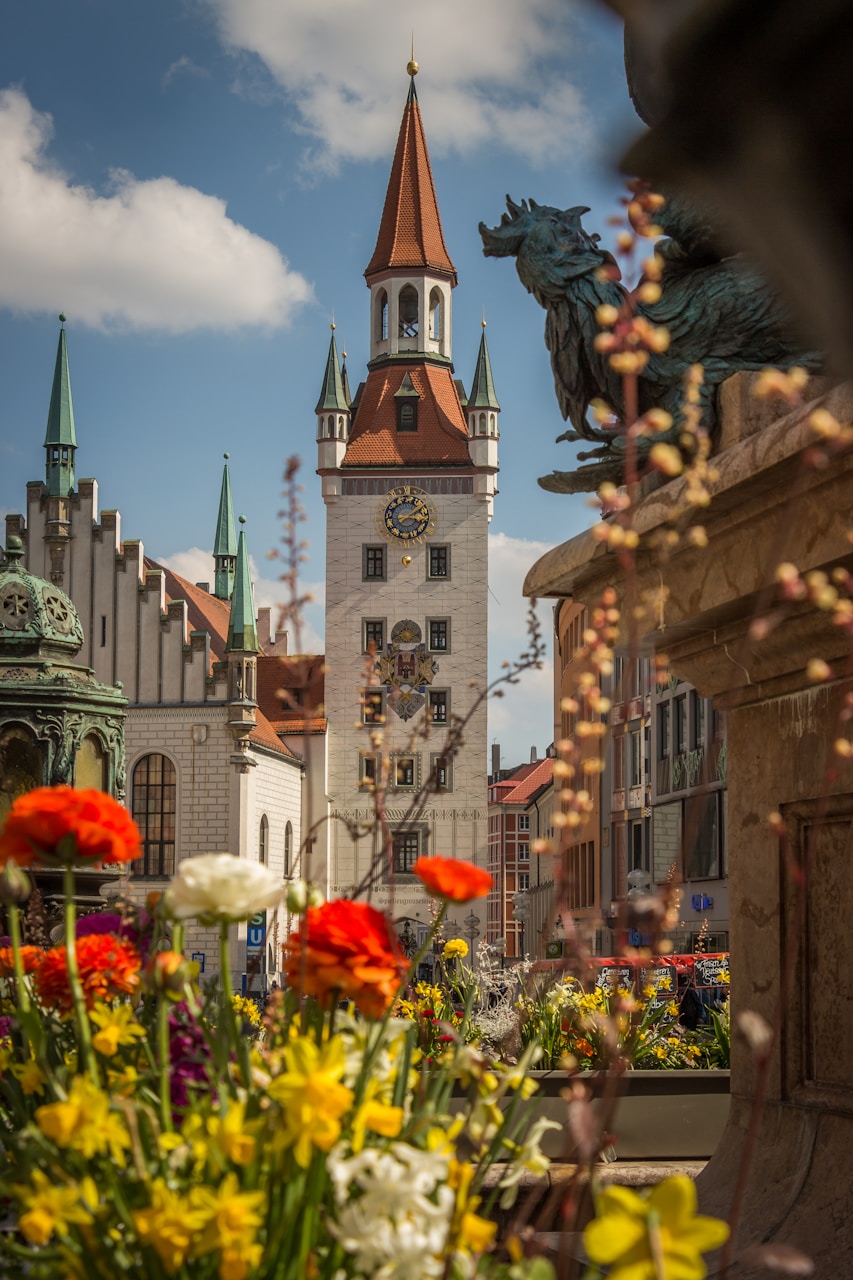
Munich’s urban landscape is divided into 25 administrative districts, locally known as “Stadtbezirke,” each with its distinct character and atmosphere.
The city’s layout resembles a wheel, with the historic center (Altstadt) as the hub and neighborhoods radiating outward like spokes, connected by efficient public transportation.
Understanding this structure helps newcomers navigate between central neighborhoods like Maxvorstadt and Schwabing to more residential areas like Bogenhausen and Haidhausen.
Overview of Munich Neighborhood Map and District Structure
Munich’s administrative structure divides the city into 25 distinct boroughs (Stadtbezirke), each with its own unique character and further subdivided into smaller neighborhoods.
The central districts (1-9), forming the historical core enclosed by the Mittlerer Ring road, offer dense urban living with excellent public transportation, abundant cultural attractions, and premium housing prices.
Outer districts provide more residential atmospheres with greater green spaces, family-friendly environments, and generally more affordable housing options, though with increasing distance from the lively city center.
How the City Is Divided Into Boroughs and Subdivisions
To navigate the charming Bavarian capital effectively, one must first understand how the city is thoughtfully divided into distinct administrative and cultural zones.
Munich neighborhoods are organized into 25 numbered districts (Stadtbezirke), each with its own character.
The munich neighborhood map radiates outward from the historic center, creating concentric rings that offer diverse living experiences where to live in munich across the entire munich area.
Key Differences Between Central and Outer Areas
While exploring the city’s districts, travelers quickly notice stark contrasts between central and outer Munich neighborhoods.
The best areas to stay in Munich include lively central districts with historic architecture, bustling markets, and nightlife, while Munich suburbs offer residential tranquility, green spaces, and local flavor.
The best neighborhood in Munich depends on whether visitors value urban energy or authentic Bavarian character.
If you are traveling to Asia, you can visit Asian tourist destinations that we have summarized especially for you so that you get useful information.
Altstadt-Lehel: Staying in the Historic Center
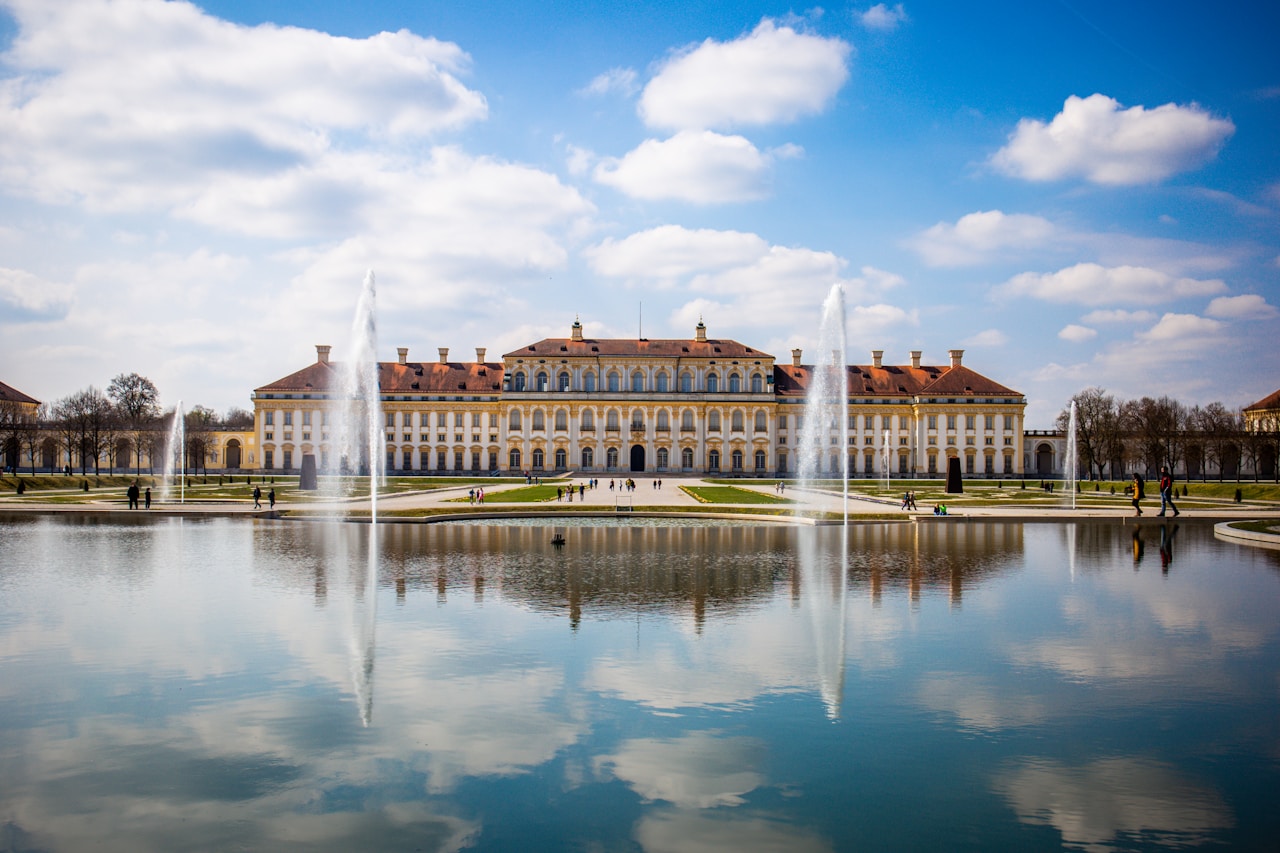
Altstadt-Lehel stands as Munich’s prime location for tourists seeking seamless access to iconic landmarks like Marienplatz, Residenz Palace, and the Hofbräuhaus.
Visitors can explore centuries of Bavarian history during daylight hours by foot, then witness the district’s transformation as evening falls and elegant wine bars, traditional beer halls, and modern cocktail lounges illuminate the medieval streets.
The neighborhood’s central position eliminates the need for public transportation while providing an authentic immersion in Munich’s celebrated cultural heritage.
Best Location to Stay in Munich for Sightseeing and Walkability
Munich’s historic center, Altstadt-Lehel, serves as the ultimate base for tourists seeking maximum walkability to the city’s top attractions.
From this central district, visitors can easily explore Marienplatz with its famous Glockenspiel, browse the upscale shops along Maximilianstrasse, and visit world-class museums like the Residenz.
The neighborhood’s cobblestone streets lead to countless restaurants serving authentic Bavarian cuisine and historic squares where centuries of Munich’s rich history unfold before your eyes.
Access to Major Attractions Like Marienplatz and Museums
When it comes to sightseeing convenience, few neighborhoods can rival Altstadt-Lehel’s prime location at the heart of Munich’s cultural landscape.
Visitors seeking the best area in Munich to stay will appreciate its proximity to Marienplatz, the Residenz, and Pinakothek museums.
The best neighborhoods in Munich for those who visit Munich prioritize access—Altstadt-Lehel delivers with every major attraction within walking distance.
Shopping Streets, Restaurants, and Historic Squares
Boasting some of Europe’s most elegant shopping boulevards, Altstadt-Lehel transforms everyday retail therapy into a historical experience.
The best neighborhood to stay in Munich intertwines beautiful Munich’s past with lively commerce along Maximilianstrasse and Theatinerstrasse.
Visitors travel Munich’s historic squares to discover charming cafés and traditional Bavarian restaurants, making this central district among the best areas to stay in Munich for authentic cultural immersion.
Where to Go at Night in Munich’s Old Town
Munich’s Old Town transforms after dark with centuries-old beer halls becoming lively nighttime destinations.
The Hofbräuhaus, dating back to 1589, offers traditional Bavarian music, hearty cuisine, and liter steins of local beer well into the evening hours.
Visitors seeking entertainment beyond beer culture can explore elegant cocktail bars around Maximilianstrasse or catch performances at the historic Residenztheater and Nationaltheater.
Traditional Beer Halls and Evening Entertainment
No visit to Munich’s historic center would be complete without experiencing its legendary beer halls and lively nightlife.
The Hofbräuhaus stands as an iconic destination where locals and travelers gather for authentic Bavarian revelry.
Is Munich a good place to live? Just observe residents savoring evening traditions, from boisterous singalongs to clinking steins, where to go at night in Munich becomes self-evident.
Maxvorstadt: Art, Academia, and Architecture
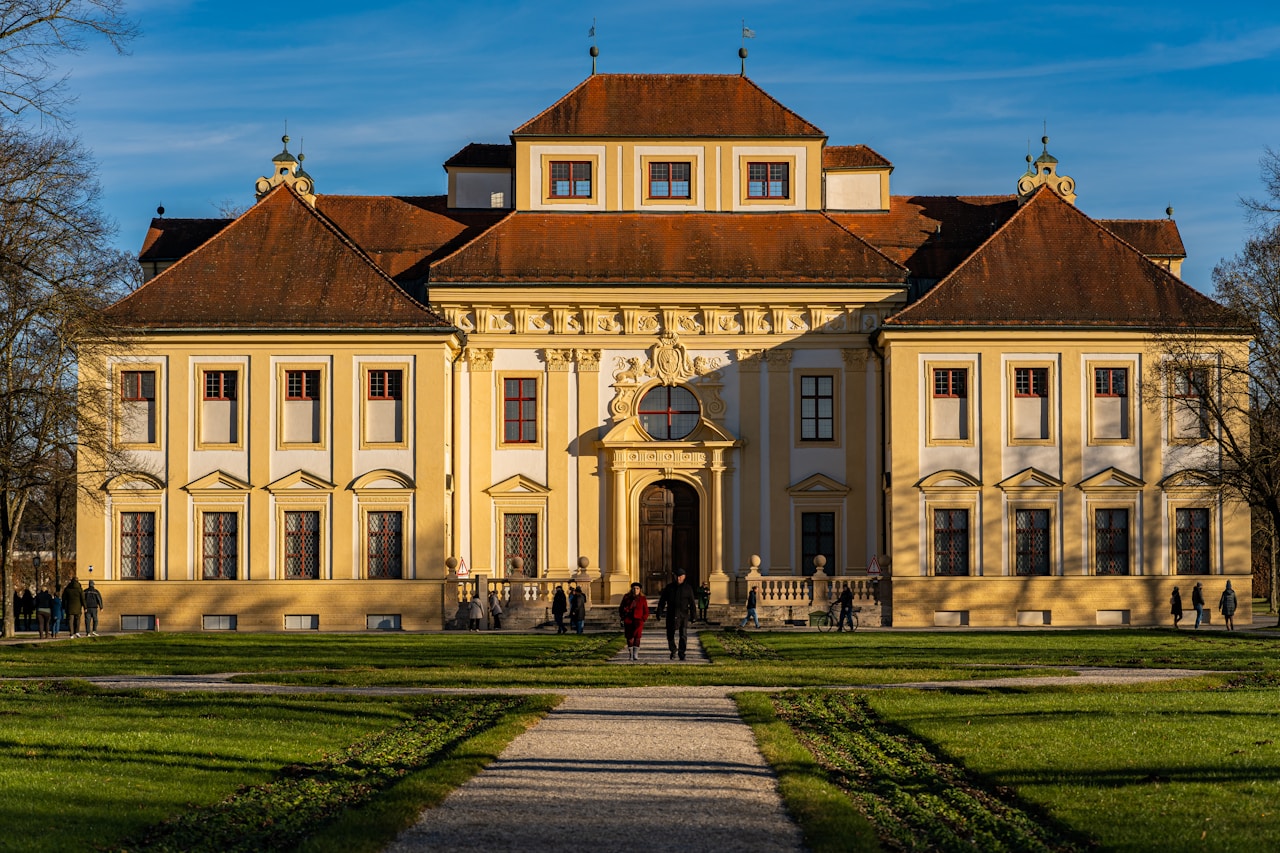
Maxvorstadt, often called Munich’s cultural district, houses the city’s renowned museum quarter with institutions like the Alte Pinakothek and Lenbachhaus attracting art enthusiasts from around the world.
Home to two prestigious universities, Ludwig Maximilian University and Technical University of Munich, this neighborhood blends intellectual energy with stunning neo-classical and modernist architecture.
The area’s abundance of galleries, cafés, bookshops, and convenient public transportation makes it equally appealing for tourists seeking cultural immersion and professionals considering long-term residence in the Bavarian capital.
Best Neighborhood to Stay in Munich for Museum Lovers
Maxvorstadt captivates museum enthusiasts with its world-renowned Pinakothek trilogy, showcasing art spanning seven centuries in magnificent gallery spaces.
The neighborhood’s academic character emerges through Ludwig Maximilian University‘s elegant buildings, creating an intellectual atmosphere where students frequent charming cafés and independent bookstores along tree-lined boulevards.
Visitors can wander through Maxvorstadt’s architectural splendor, where neoclassical facades and art nouveau details frame cultural institutions along Brienner Strasse and Königsplatz, making it Munich’s undisputed artistic and intellectual center.
Pinakothek Museums and University Vibe
Nestled in the cultural heart of Munich, the Maxvorstadt district stands as a tribute to Bavaria’s rich artistic heritage and academic prowess.
Home to the three Pinakothek museums—Old, New, and Modern—it offers unparalleled artistic exploration spanning centuries.
The district pulses with youthful energy from Ludwig Maximilian University students who enliven its cafés, bookstores, and innovative galleries.
Cafés, Bookstores, and Elegant Avenues
Beyond the museum walls, Maxvorstadt’s elegant avenues reveal a sophisticated tapestry of literary and culinary delights.
Discerning bibliophiles browse Lehmkuhl or Lost Weekend, independent bookstores with carefully curated collections.
Café Jasmin and Café Luitpold offer historic elegance, while artisanal coffee shops like Man Versus Machine fuel scholarly discussions.
Türkenstraße and Schellingstraße beckon with boutiques and galleries.
Is Maxvorstadt a Good Area to Live in Munich Long-Term?
Maxvorstadt blends residential living with an ever-present cultural pulse that makes everyday life stimulating.
The neighborhood’s apartment buildings and quiet side streets offer peaceful living spaces, while the nearby museums, universities, and cafés infuse the area with intellectual energy.
This balance between residential calm and cultural vibrancy makes Maxvorstadt appealing for those seeking a long-term home with immediate access to Munich’s artistic and academic heartbeat.
Residential Character Mixed With Cultural Energy
The harmonious blend of residential tranquility and lively cultural energy defines Maxvorstadt’s unique charm in Munich’s urban landscape.
Tree-lined streets housing families and professionals exist alongside dynamic galleries, museums, and university buildings.
This duality creates an ideal environment for those seeking both peaceful living quarters and stimulating cultural experiences without compromise—making it perfect for long-term residents who value intellectual stimulation.
Schwabing: Bohemian Spirit and Green Spaces
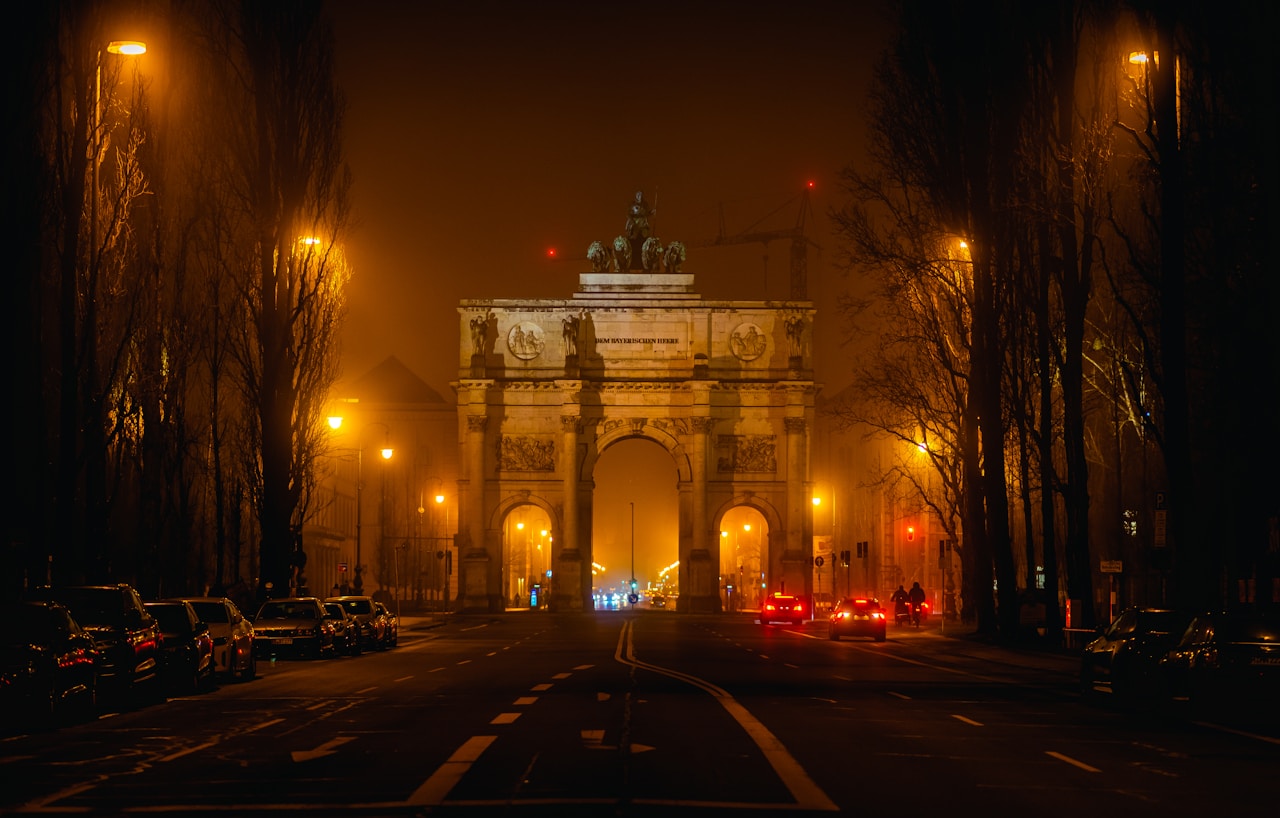
Schwabing retains its bohemian charm from the early 20th century when artists, writers, and intellectuals gathered in its cafés and tree-lined streets.
Travelers seeking a relaxed local atmosphere will find Schwabing’s blend of leafy parks, stylish boutiques, and authentic Bavarian beer gardens particularly appealing.
The neighborhood’s proximity to the expansive Englischer Garten offers visitors a perfect balance between urban exploration and natural retreat.
Best Areas to Stay in Munich for a Relaxed Local Feel
Schwabing entices visitors with its seamless access to the magnificent English Garden, where locals gather for picnics, sports, and sunbathing throughout the year.
The neighborhood’s creative atmosphere stems from its history as Munich’s artistic quarter, once home to writers, painters, and intellectuals who shaped its bohemian character.
Along Leopoldstraße and surrounding streets, historic architecture and tree-lined avenues merge with the youthful energy of university students, creating a fascinating blend of old-world charm and contemporary vibrancy.
English Garden Access and Creative Atmosphere
A paradise for nature enthusiasts and creative souls alike, Munich’s English Garden serves as Schwabing’s crown jewel, offering residents and visitors immediate access to one of Europe’s largest urban parks.
The neighborhood’s bohemian character flourishes through:
- Artistic cafés hosting impromptu poetry readings
- Independent galleries showcasing avant-garde exhibitions
- Street musicians creating spontaneous performances
- Literary societies meeting in historic buildings
- Creative workshops operating in repurposed industrial spaces
Historic Streets Blended With Youthful Energy
Wandering through Schwabing reveals an enchanting juxtaposition where centuries-old architecture meets lively contemporary life.
Baroque buildings house avant-garde galleries and spirited cafés where intellectuals gather.
University students animate the historic streets with impromptu performances, while artisans display their crafts in centuries-old squares.
The neighborhood’s cobblestone alleys lead to hidden biergartens where tradition and innovation harmoniously coexist.
Why Schwabing Is Among the Best Neighborhoods in Munich
Schwabing’s artistic heritage continues to attract creative minds seeking inspiration among its tree-lined streets and historic architecture.
University students gravitate to the neighborhood’s lively cafés and affordable living options, creating a youthful energy that permeates the area.
Young professionals value Schwabing’s perfect balance of cultural richness, proximity to English Garden, and excellent transit connections to Munich’s business districts.
Unique Appeal for Artists, Students, and Professionals
For decades, Schwabing has drawn creative souls to its tree-lined streets and bohemian atmosphere, cultivating a reputation as Munich’s cultural heart.
This district offers something for everyone across the professional spectrum:
- Artists find inspiration in numerous galleries and creative spaces
- Students thrive near Ludwig Maximilian University
- Professionals appreciate the upscale cafés and boutiques
- Freelancers enjoy abundant co-working spaces
- Entrepreneurs connect in innovative startup hubs
Glockenbachviertel and Isarvorstadt: Lively and Trendy
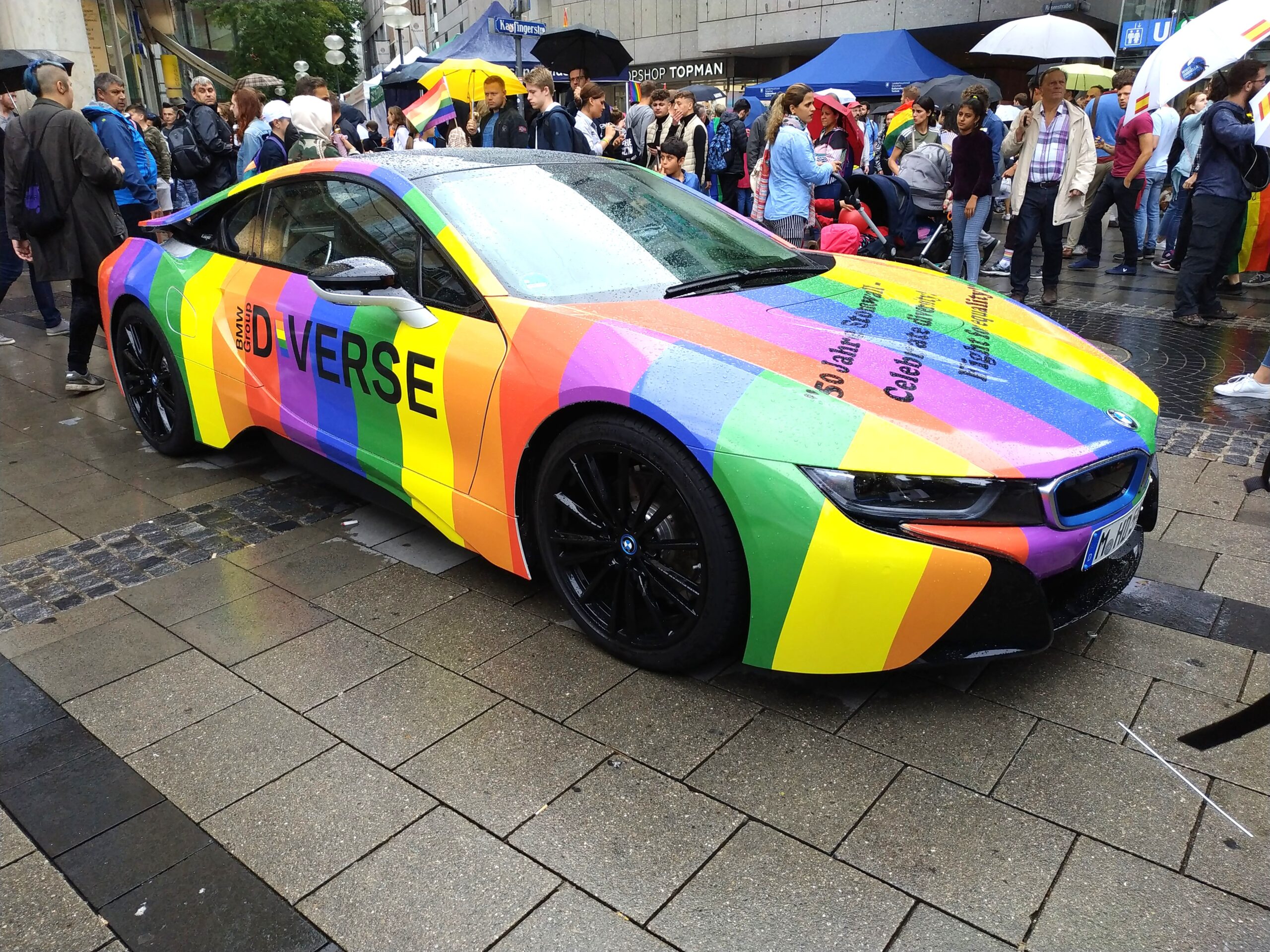
Glockenbachviertel and Isarvorstadt form Munich’s lively epicenter for nightlife enthusiasts, with countless trendy bars, clubs, and restaurants lining the picturesque streets.
These interconnected neighborhoods have evolved from their historical roots into the city’s LGBTQ+ heartland and a magnet for creative professionals.
Visitors seeking Munich’s most fashionable addresses will find them here, where artisanal coffee shops transform into cocktail lounges after dark, and the energetic atmosphere continues well into the early hours.
Best Part of Munich to Stay for Nightlife and Bars
Glockenbachviertel and Isarvorstadt districts offer Munich’s most lively nightlife, with trendy cocktail bars, underground music venues, and energetic dance clubs dotting the streets.
The area has evolved into the heart of Munich’s LGBTQ+ community, hosting everything from sophisticated lounge bars to lively clubs that welcome everyone long into the night.
Fashion-forward locals and visitors alike gather at stylish establishments like Pimpernel and NY Club, where the music pulses until dawn and the city’s cosmopolitan spirit truly comes alive.
Where to Go at Night in Munich for Music and Drinks
When the sun sets over Munich, the lively neighborhoods of Glockenbachviertel and Isarvorstadt transform into the city’s premier nightlife destinations.
Visitors seeking music and drinks should explore:
- Milla Club for indie bands and electronic beats
- Ideal Records for vinyl DJs and craft cocktails
- Cord Club for underground techno
- Zur Goldenen Bar for elegant cocktails
- Substanz for alternative rock scene
LGBTQ+ Friendly Scene and Fashionable Spots
Widely celebrated as Munich’s LGBTQ+ heart, the adjacent neighborhoods of Glockenbachviertel and Isarvorstadt offer a lively, inclusive atmosphere where rainbow flags proudly adorn storefronts and cafés.
The area buzzes with fashionable boutiques, hip cocktail bars, and trendy restaurants.
Visitors flock to Hans-Sachs-Straße and Müllerstraße for the spirited nightlife scene that welcomes everyone regardless of orientation.
Why This Area Is Considered One of the Coolest Munich Neighborhoods
Glockenbachviertel and Isarvorstadt captivate locals and tourists alike with their lively diversity, encompassing Munich’s thriving LGBTQ+ community and multicultural atmosphere.
The neighborhoods boast an impressive culinary landscape, from traditional Bavarian taverns to innovative international fusion restaurants that satisfy every palate.
Independent boutiques and vintage shops line the streets, offering unique fashion pieces, local designs, and handcrafted goods that can’t be found in Munich’s more commercial districts.
Diversity, Dining, and Boutique Shopping
Known for its lively energy and progressive atmosphere, the combined area of Glockenbachviertel and Isarvorstadt stands as Munich’s creative epicenter where diversity thrives in every corner.
The neighborhood offers:
- Eclectic fusion restaurants alongside traditional Bavarian eateries
- LGBTQ+-friendly venues and dynamic nightlife spots
- Independent fashion boutiques featuring local designers
- Vintage stores with one-of-a-kind treasures
- Artisanal coffee shops doubling as creative spaces
Haidhausen: Traditional Charm Meets Modern Munich
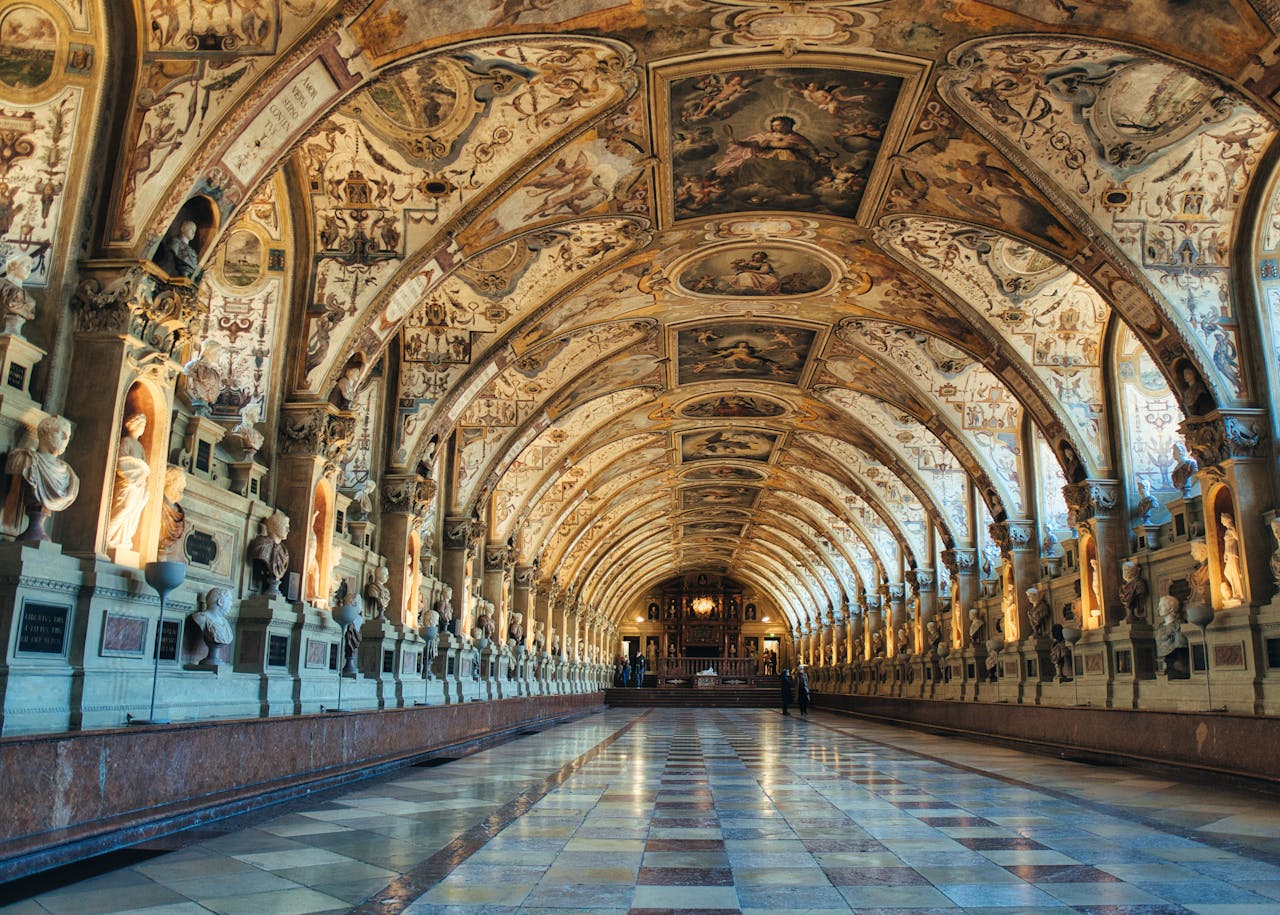
Haidhausen, often called the “French Quarter” of Munich, masterfully blends historic charm with contemporary appeal through its well-preserved 19th-century architecture and modern amenities.
Visitors and residents alike are drawn to its cobblestone streets lined with authentic Bavarian restaurants, trendy cafés, and the cultural hub of Gasteig, home to the Munich Philharmonic.
The neighborhood’s proximity to the Isar River and excellent public transportation connections make it an ideal base for exploring Munich while experiencing the authentic local lifestyle.
Best Neighborhood in Munich for a Mix of Old and New
Haidhausen’s French Quarter offers cultural treasures like the Gasteig cultural center and historic Müllersches Volksbad, immersing visitors in Munich’s artistic heritage.
The neighborhood’s relaxed atmosphere shines through its eclectic cafés where locals linger over coffee amid beautifully preserved 19th-century buildings.
Visitors can experience authentic Munich at the Wiener Markt, where regional produce vendors and specialty shops showcase Bavarian culinary traditions in a lively marketplace setting.
Explore the French Quarter and Cultural Spots
While strolling through the charming streets of Munich’s Haidhausen district, visitors quickly discover why locals affectionately call it the “French Quarter.”
This lively neighborhood east of the Isar River elegantly blends Bavarian tradition with contemporary urban culture, creating one of Munich’s most distinctive and appealing areas.
Cultural treasures in Haidhausen include:
- Gasteig cultural center, home to the Munich Philharmonic
- Muffatwerk, a converted power station hosting concerts
- Countless art galleries showcasing local talent
- Historic Müllersches Volksbad, Munich’s first public bath
- Trendy coffee shops and world-class restaurants
Relaxed Cafés and Local Marketplaces
Where can one truly taste the authentic flavor of Munich’s cultural fusion?
Haidhausen’s lively marketplaces and laid-back cafés provide the answer.
Wiener Platz hosts a daily farmers’ market where locals gather amid colorful stalls.
Meanwhile, the district’s café culture flourishes along Preysingstraße, where traditional Bavarian pastries meet contemporary coffee innovations in spaces that welcome both contemplation and conversation.
Is Haidhausen One of the Best Places to Stay in Munich?
Haidhausen offers travelers a strategic location with excellent transportation links while maintaining a peaceful atmosphere away from the tourist crowds.
The neighborhood sits just east of Munich’s city center, allowing visitors to retreat from the hustle of Marienplatz and Altstadt while remaining only minutes away by S-Bahn or U-Bahn.
This balance of accessibility and tranquility makes Haidhausen particularly appealing for visitors seeking authentic local experiences without sacrificing convenience to Munich’s major attractions.
Central Yet Quieter Alternative to Busier Districts
For travelers seeking a central location without the constant bustle of Munich’s most touristic areas, Haidhausen emerges as a perfect compromise.
This neighborhood balances accessibility with tranquility, offering:
- Historic 19th-century architecture
- Easy S-Bahn access to central Munich
- Authentic local cafés and restaurants
- Proximity to Isar River recreation
- Lively cultural scene with less tourist congestion
Read more: Things To Know Before Traveling To Munich
Ludwigsvorstadt: Close to Oktoberfest and Transport Hubs
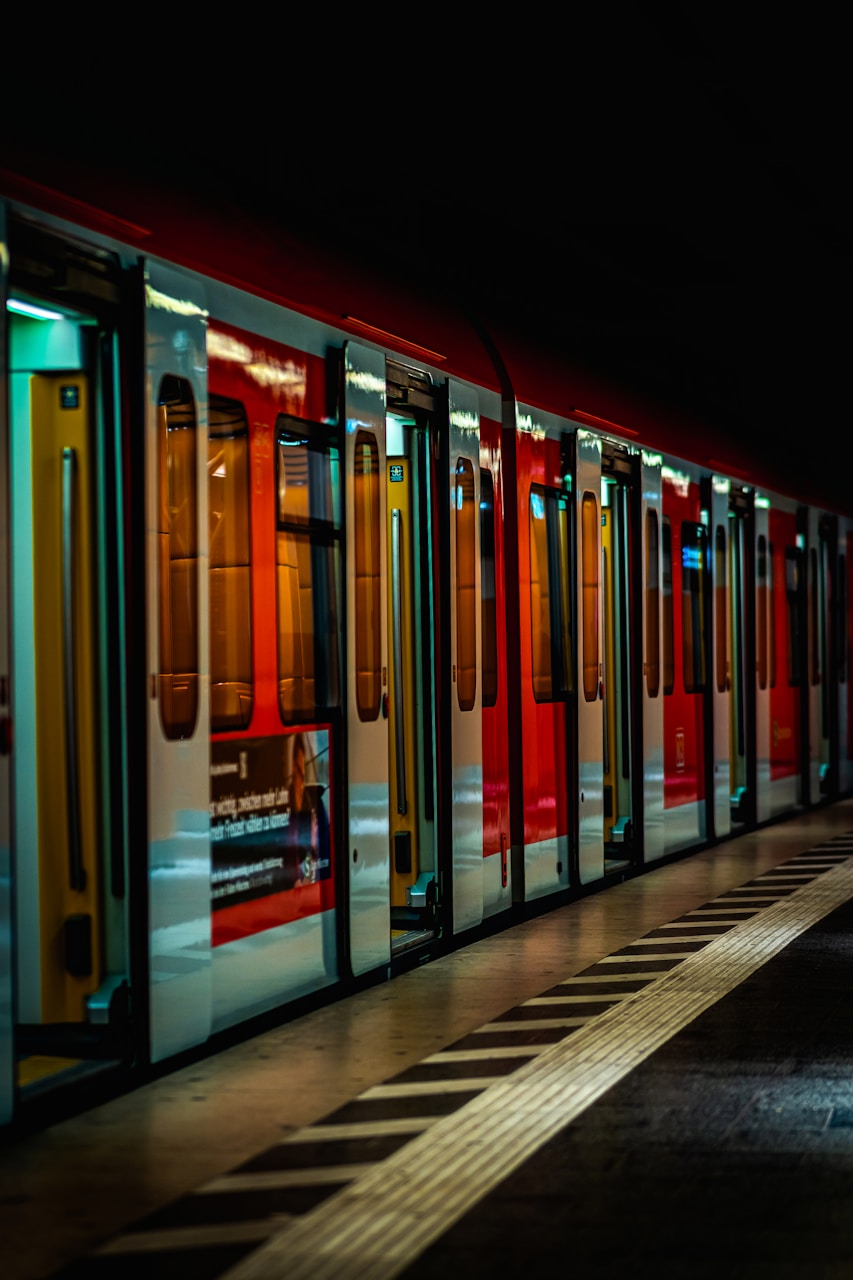
Situated adjacent to Munich’s central station, Ludwigsvorstadt offers unparalleled convenience for travelers and festival-goers alike.
This bustling neighborhood serves as the gateway to Theresienwiese, the famous grounds where Oktoberfest unfolds each autumn, making it an ideal base for visitors planning to experience Bavaria’s legendary beer celebration.
Beyond its strategic location, Ludwigsvorstadt boasts excellent public transportation connections to all corners of Munich, allowing residents and tourists to explore the city with remarkable ease.
Best Area to Stay in Munich for Events and Convenience
Ludwigsvorstadt offers unparalleled convenience for Munich visitors, nestled right beside the Central Station and within walking distance of the famous Oktoberfest grounds.
Budget-conscious travelers will appreciate the neighborhood’s range of affordable hostels and mid-tier hotels that cater specifically to short-term stays.
These practical lodging options, combined with excellent public transportation connections, make Ludwigsvorstadt an ideal base for experiencing Munich’s lively events calendar without transportation hassles.
Proximity to Munich Central Station and Fest Grounds
When travelers seek the perfect balance between convenient transportation access and proximity to Munich’s most celebrated events, the Ludwigsvorstadt district stands out as an unrivaled choice.
This lively neighborhood offers unbeatable convenience for festival-goers and transit users alike.
- Just steps from Munich Central Station (Hauptbahnhof)
- Walking distance to Theresienwiese (Oktoberfest grounds)
- Excellent U-Bahn and S-Bahn connections
- Direct airport transit links
- Easy access to city center attractions
Affordable Accommodation Options for Short-Term Visitors
For budget-conscious travelers looking to experience Munich’s lively festival scene without breaking the bank, Ludwigsvorstadt delivers an impressive array of affordable accommodation options.
The neighborhood boasts numerous hostels, budget hotels, and guest houses within walking distance of Oktoberfest grounds.
Many establishments offer weekly discounts for longer stays, while maintaining proximity to Munich’s extensive public transportation network.
What Makes Ludwigsvorstadt a Practical Munich Neighborhood
Ludwigsvorstadt positions travelers at the crossroads of Munich’s transportation network, with Munich Central Station offering direct links to the airport and major European cities.
The neighborhood features accommodations spanning from budget hostels to luxurious hotels, ensuring options for every type of visitor.
During Oktoberfest, this strategic location transforms into the epicenter of festivities, allowing guests to easily return to their lodgings after enjoying the world-famous beer celebration.
Transport Links and Hotel Variety
As the beating heart of Munich’s transportation network, Hauptbahnhof (Central Station) anchors Ludwigsvorstadt and transforms it into one of the city’s most accessible districts.
Travelers can find accommodation options spanning every price range, from luxurious to budget-friendly.
The neighborhood offers:
- Direct S-Bahn connections to Munich Airport
- U-Bahn lines to major attractions
- Walking distance to Theresienwiese (Oktoberfest grounds)
- Numerous international bus terminals
- Convenient tram connections to outlying areas
Neuhausen-Nymphenburg: Residential Beauty and Royal Legacy
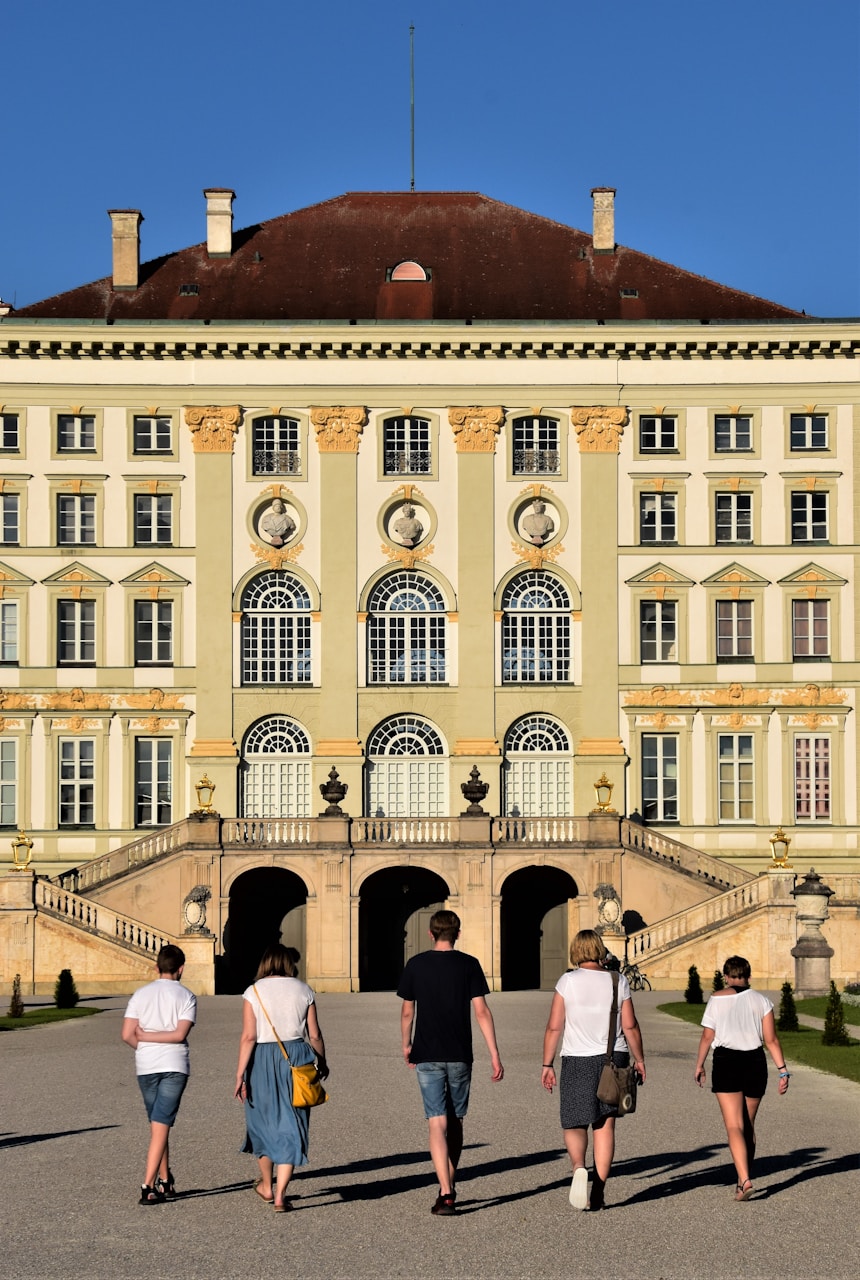
Neuhausen-Nymphenburg stands as one of Munich’s premier residential districts, offering spacious apartments, abundant green spaces, and excellent schools that make it ideal for families seeking long-term accommodation.
The neighborhood’s crown jewel, Nymphenburg Palace with its magnificent baroque gardens, infuses the area with a royal ambiance while providing residents with a stunning recreational space.
Beyond its family-friendly credentials, the district boasts a diverse selection of cafes, restaurants, and boutique shops along Rotkreuzplatz and Nymphenburger Strasse, creating a self-contained community that combines convenience with historic charm.
Best Neighborhoods in Munich for Families and Longer Visits
Neuhausen-Nymphenburg captivates families with its magnificent Nymphenburg Palace and sprawling gardens, offering royal heritage alongside peaceful green spaces perfect for afternoon strolls.
The neighborhood’s quiet, tree-lined streets create a serene environment away from Munich’s tourist centers, while still maintaining the charm of Bavarian daily life.
Local bakeries, boutique shops, and family-friendly cafés dot the residential landscape, providing authentic experiences for visitors seeking a glimpse into genuine Munich living.
Parks, Gardens, and the Famous Nymphenburg Palace
Dominating the landscape of the Neuhausen-Nymphenburg district, the magnificent Nymphenburg Palace stands as the crown jewel among Munich’s numerous green spaces.
The palace grounds offer nature enthusiasts and history buffs alike opportunities to escape city confines:
- 200-hectare baroque garden complex
- Canal perfect for winter ice-skating
- Natural Museum of Man and Nature
- Amalienburg hunting lodge
- Badenburg Pavilion overlooking the lake
Quiet Streets With Local Bakeries and Shops
Beyond the grandeur of palace grounds and manicured gardens, the tree-lined streets of this district unfold into a tapestry of local life that visitors rarely discover.
Family-run bakeries emit the aroma of fresh pretzels while independent boutiques showcase handcrafted treasures.
These quiet cobblestone lanes offer authentic glimpses into Munich’s daily rhythms, far from tourist circuits.
Is Neuhausen a Good Place to Live in Munich?
Neuhausen offers a distinctive community atmosphere that balances urban convenience with residential tranquility.
The neighborhood’s tree-lined streets and well-maintained public spaces foster a strong sense of belonging among locals who regularly gather at neighborhood cafés and weekly markets.
Residents benefit from excellent urban planning that prioritizes pedestrian zones, green spaces, and communal areas, creating an environment that feels both cosmopolitan and comfortably intimate.
Community Vibe and Urban Comfort
When residents speak of Neuhausen-Nymphenburg’s community atmosphere, they often highlight its perfect balance of urban convenience and neighborhood warmth.
This district offers:
- Abundant local cafés where regulars are greeted by name
- Seasonal street festivals celebrating Bavarian traditions
- Weekend markets showcasing regional produce
- Multi-generation playgrounds fostering community bonds
- Independent shops supporting local craftsmanship and artistry
Bogenhausen: Elegant and Upscale Side of Munich
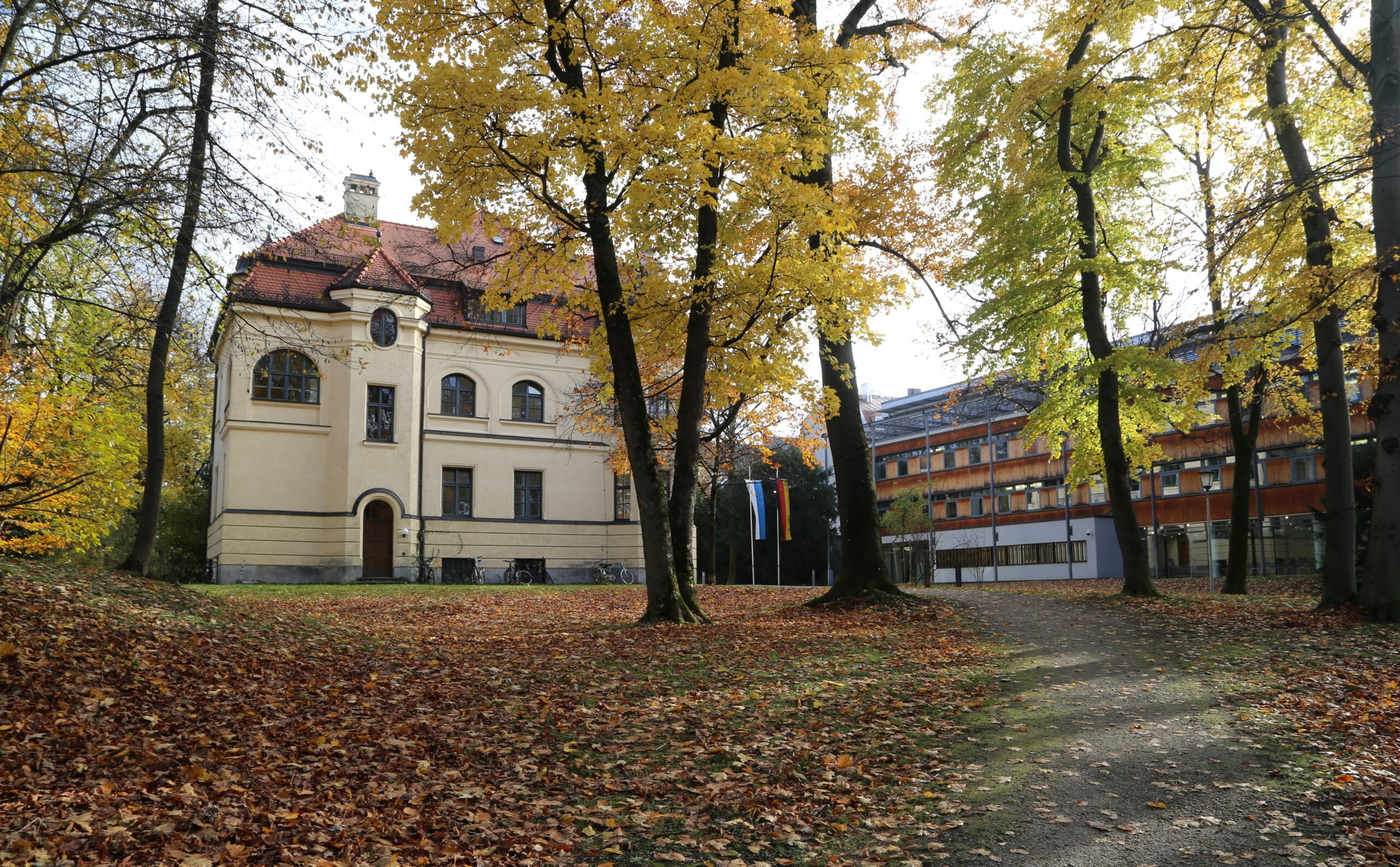
Bogenhausen stands as Munich’s sophisticated district, where elegant villas and tree-lined avenues create a peaceful haven for discerning travelers.
The neighborhood’s refined character attracts those seeking stylish accommodations away from the tourist-heavy city center, while still offering convenient access to Munich’s attractions.
Visitors can experience the suburb’s distinctive blend of aristocratic heritage and modern luxury while enjoying its serene atmosphere and upscale amenities.
Best Places to Stay in Munich for Peace and Style
Bogenhausen captivates visitors with its elegant historic villas nestled along tree-lined streets that exude old-world charm.
The neighborhood’s refined character extends to its cultural offerings, with art galleries and embassies adding to the sophisticated atmosphere.
Nature enthusiasts will appreciate the tranquil riverside walks along the Isar, providing a perfect balance of urban elegance and natural beauty.
Historic Villas and Leafy Streets
Nestled along the eastern banks of the Isar River, the Bogenhausen district stands as a tribute to Munich’s aristocratic history with its magnificent historic villas and tree-lined avenues.
Distinguished by architectural splendor, this neighborhood offers:
- Art Nouveau-era mansions
- Peaceful parks and gardens
- Cultural landmarks including Prinzregententheater
- Exclusive restaurants hidden among leafy streets
- Uninterrupted views of the Isar’s natural beauty
Art Galleries, Embassies, and Riverside Walks
Beyond its historic mansions lies Bogenhausen’s refined cultural landscape, where art connoisseurs and diplomats cross paths along picturesque riverside promenades.
The Museum Villa Stuck showcases symbolist works while embassies line Prinzregentenstraße’s elegant corridor.
Locals embrace freedom along the Isar’s eastern bank, where walking paths wind through verdant stretches offering spectacular city views and peaceful respite from Munich’s urban rhythm.
Exploring the Munich Suburbs With a Touch of Sophistication
Bogenhausen strikes the perfect balance between urban accessibility and suburban tranquility with its efficient public transportation connections to central Munich.
While only minutes from downtown via tram or U-Bahn, residents enjoy peaceful tree-lined streets and the serene ambiance of the Isar River’s eastern banks.
The neighborhood’s strategic location allows for quick commutes to Munich’s business districts while maintaining enough distance from tourist crowds to preserve its sophisticated calm.
How Bogenhausen Balances Accessibility With Tranquility
While many Munich neighborhoods force residents to choose between urban convenience and peaceful living, Bogenhausen masterfully delivers both.
This eastern district offers the rare balance urban dwellers seek:
- Five-minute U-Bahn rides to city center
- Tree-lined streets muffling urban sounds
- Proximity to English Garden’s vast greenspaces
- Elegant pre-war architecture preserved meticulously
- Riverside paths along the Isar for morning strolls
Understanding the Best Areas to Stay in Munich
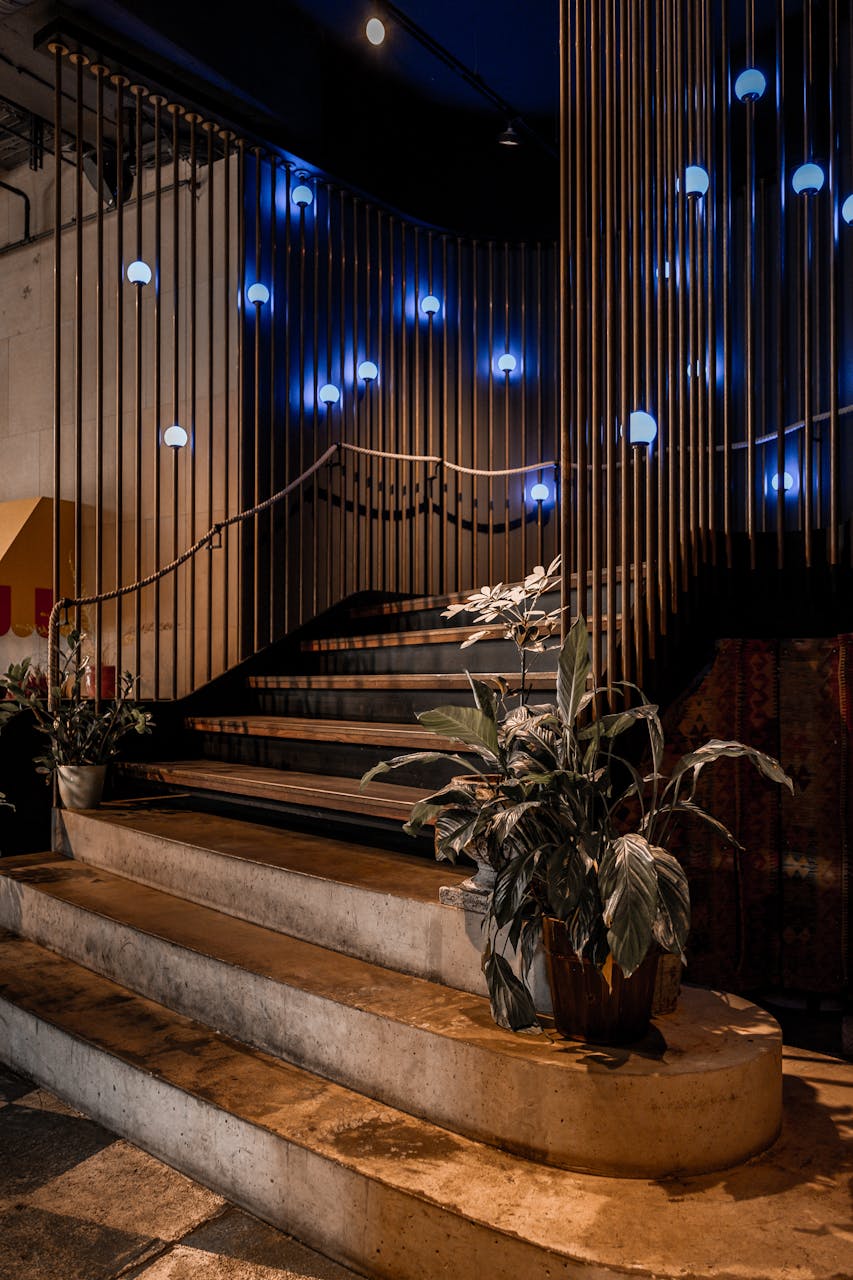
Munich presents distinct neighborhood options tailored to various travel styles and relocation needs.
Travelers seeking cultural immersion might prefer the historic center, while families often gravitate toward leafy Haidhausen or Schwabing with their excellent schools and green spaces.
Expats considering permanent moves should weigh factors beyond short-term appeal, including proximity to international schools, transport connections, and the unique community atmospheres that define each Munich district.
Comparing the Best Neighborhoods to Stay in Munich Based on Travel Style
Munich offers distinct neighborhoods that cater to various travel styles, from first-time visitors seeking central convenience to families requiring spacious accommodation options.
Travelers exploring the Bavarian capital can select areas that align perfectly with their itinerary priorities and financial parameters, whether that means staying near major attractions or finding budget-friendly alternatives slightly removed from the city center.
The right Munich neighborhood choice ultimately depends on whether one travels solo, with children, or as part of a group, with each district providing its own unique advantages regarding transportation access, nightlife, and cultural immersion.
Ideal Locations for First-Time Visitors, Families, or Solo Travelers
When travelers plan their Munich adventure, choosing the right neighborhood can greatly enhance their overall experience in Bavaria’s capital.
Different areas cater to specific travel styles:
- First-timers thrive in historic Altstadt with its central attractions
- Families appreciate spacious Nymphenburg’s parks and palace grounds
- Solo travelers enjoy lively Schwabing’s café culture
- Maxvorstadt offers cultural immersion for museum enthusiasts
- Budget travelers find value in well-connected Haidhausen
Which Munich Area Suits Your Itinerary and Budget
Choosing the perfect Munich neighborhood demands consideration of both practical needs and personal preferences.
Budget travelers find value in youthful Schwabing, while luxury seekers gravitate toward elegant Altstadt.
Those prioritizing convenience might select Hauptbahnhof near transit, whereas families often prefer spacious Haidhausen.
For authentic Bavarian immersion, Maxvorstadt offers cultural riches without the tourist crowds.
Where to Live in Munich for Expats and Relocation
Munich presents unique considerations for expatriates seeking long-term housing, with neighborhoods varying widely in rental costs, available amenities, and accessibility to transportation networks.
Prospective residents must navigate Munich’s competitive rental market while balancing factors such as proximity to international schools, expat communities, and essential services.
Neighborhoods like Bogenhausen, Schwabing, and Haidhausen offer excellent qualities for relocating professionals, providing strategic locations that minimize commute times while maximizing quality of life.
Long-Term Considerations and Housing Options
As expatriates consider settling into Munich for the long-term, understanding the housing landscape becomes essential for making informed decisions about where to put down roots.
Long-term residents should explore these diverse housing options:
- Rental apartments (Mietwohnungen) in lively districts like Schwabing
- Purchasing condominiums (Eigentumswohnungen) throughout stable Bavarian neighborhoods
- House-sharing arrangements (WGs) popular among young professionals
- Suburban single-family homes with garden space
- Newly developed housing projects featuring modern amenities
Navigating Rent, Local Amenities, and Commuting Options
Beyond selecting the perfect neighborhood, expatriates must navigate the practical realities of Munich living that shape daily experience and financial planning.
Rental costs vary dramatically across districts, with central areas commanding premium prices.
The city’s efficient public transportation network offsets location constraints, while each neighborhood offers distinct amenities from traditional beer gardens to modern shopping complexes and green spaces.
Summary of Top Picks Based on Interest

Munich’s varied districts cater to distinct visitor preferences, from Maxvorstadt’s museum quarter to Schwabing’s lively nightlife scene.
The expansive English Garden borders neighborhoods perfect for nature enthusiasts, while centrally located Altstadt-Lehel offers unparalleled access to public transportation.
These specialized areas allow travelers to customize their Munich experience based on specific interests rather than settling for generic tourist accommodations.
Best Places to Stay in Munich for Museums and History
For travelers seeking to immerse themselves in Munich’s rich cultural heritage, several neighborhoods stand out as ideal bases for museum exploration and historical discovery.
The Kunstareal district in Maxvorstadt houses an extraordinary concentration of world-class museums within walking distance of each other.
- Maxvorstadt – Home to the Museum Quarter with Pinakothek galleries and Lenbachhaus
- Altstadt (Old Town) – Perfect for proximity to the Residenz, Bavarian National Museum, and Jewish Museum
- Lehel – Quiet area near the Deutsches Museum and Munich City Museum
- Schwabing – Bohemian district with Villa Stuck Museum and historical artistic significance
- Bogenhausen – Upscale area featuring the Museum of Cultural History and elegant architecture
These neighborhoods offer convenient access to Munich’s cultural institutions while providing distinctive atmospheres that reflect different aspects of the city’s historical evolution.
Best Areas to Stay in Munich for Nightlife and Dining
While museums showcase Munich’s cultural legacy, the city’s lively neighborhoods reveal its contemporary character through gastronomy and after-hours entertainment.
For nightlife enthusiasts, Schwabing beckons with bohemian energy, stylish cocktail bars and late-night venues along Leopoldstraße.
The Glockenbachviertel offers Munich’s most dynamic LGBTQ+ scene with trendy bars and clubs clustered around Hans-Sachs-Straße.
Culinary explorers should consider Haidhausen, where Franziskanerstraße delivers diverse eateries from traditional Bavarian to innovative fusion cuisines.
For simultaneous access to dining and dancing, Maxvorstadt bridges sophistication and energy with student-friendly establishments and upscale restaurants.
The Werksviertel-Mitte district represents Munich’s newest hotspot, where industrial spaces now house cutting-edge gastronomy concepts and electronic music venues.
Best Neighborhoods to Stay in Munich for Green Spaces
The verdant side of Bavaria’s capital reveals itself through neighborhoods where urban design harmonizes with natural landscapes.
Munich offers abundant green retreats for travelers seeking natural respite amid urban exploration.
- Bogenhausen borders the expansive Englischer Garten, providing immediate access to Munich’s largest park.
- Schwabing-West combines bohemian atmosphere with proximity to Luitpoldpark’s sprawling meadows.
- Haidhausen residents enjoy the riverside Praterinsel and quick access to Maximiliansanlagen.
- Sendling offers the peaceful Westpark with its beautiful Japanese garden and Thai temple.
- Nymphenburg-Neuhausen surrounds the majestic palace gardens, offering royal scenery for morning jogs.
These districts deliver the perfect balance between metropolitan amenities and natural sanctuary, allowing visitors to experience Munich’s ecological consciousness without sacrificing urban convenience.
Best Part of Munich to Stay for Convenience and Transit Access
Munich’s transportation infrastructure forms the backbone of visitor mobility, connecting neighborhoods through an efficient network of U-Bahn, S-Bahn, trams, and buses.
For maximum transit convenience, Marienplatz sits at the city’s transportation crossroads, offering immediate access to multiple U-Bahn and S-Bahn lines.
Nearby Hauptbahnhof (Central Station) serves as Munich’s rail hub, ideal for travelers planning day trips to surrounding attractions like Neuschwanstein Castle or Salzburg.
The bohemian Schwabing district combines excellent U-Bahn connections with walkability to major attractions.
For business travelers, Bogenhausen provides quick access to Ostbahnhof with direct airport connections.
Budget-conscious visitors might prefer Sendling or Au-Haidhausen, where efficient tram networks connect to central locations while offering more affordable accommodation options away from tourist centers.
Wrapping Up
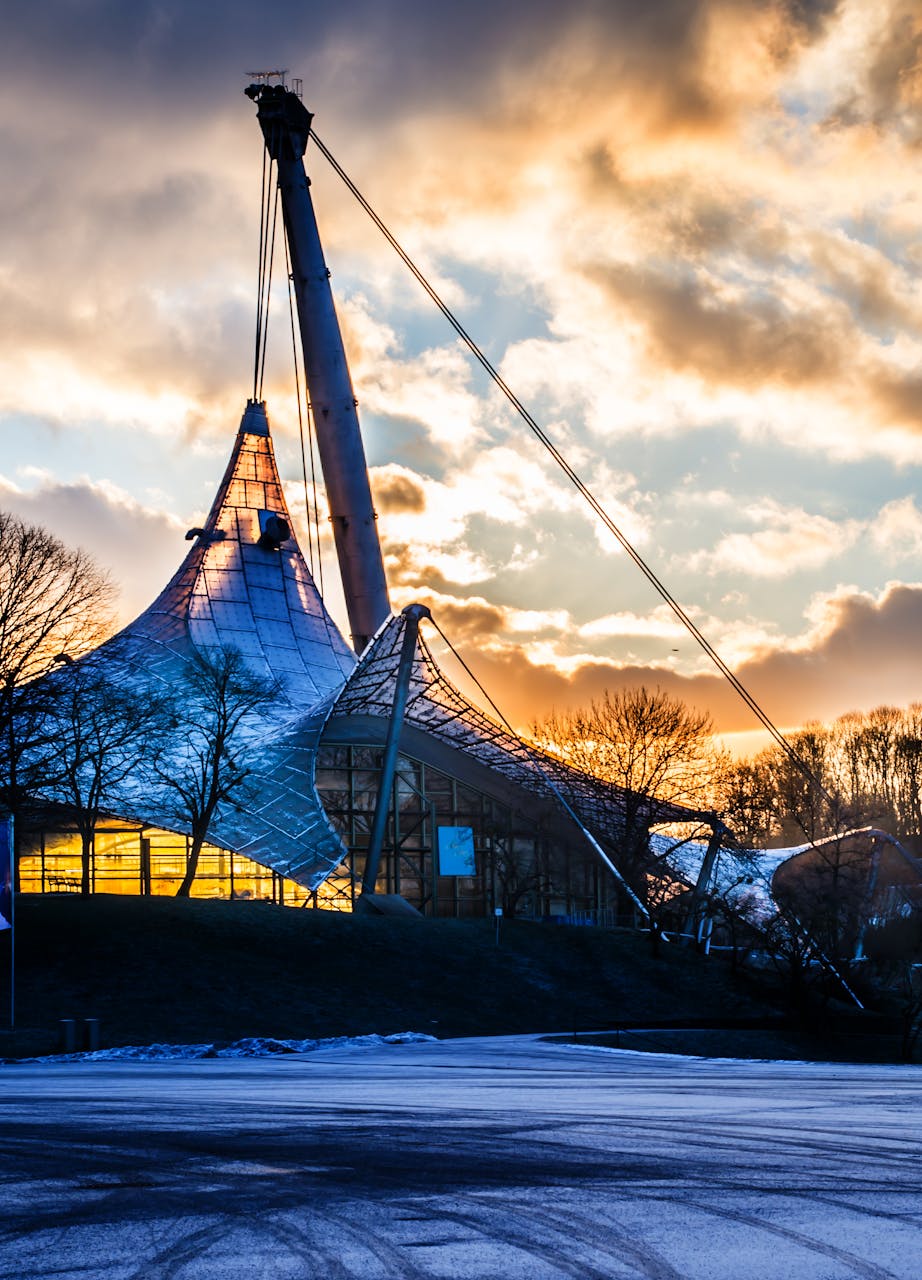
Munich’s neighborhoods unfold like chapters in a grand Bavarian novel, each with its distinct character and charm.
Whether drawn to the medieval splendor of Altstadt-Lehel, the artistic pulse of Maxvorstadt, or the leafy elegance of Bogenhausen, visitors will find their perfect Munich match.
The city’s diverse quarters promise authentic experiences beyond the typical tourist trail, inviting travelers to craft their own uniquely memorable Munich story.
Frequently Asked Questions (FAQs)
What is the best district to stay in Munich for first-time visitors?
Altstadt-Lehel is the top choice for first-time travelers. Located in the historic city center, it offers walking-distance access to landmarks like Marienplatz, the Residenz Palace, and Hofbräuhaus. Its cobblestone streets are filled with shops, museums, and traditional Bavarian restaurants, making it ideal for sightseeing without needing public transport.
Where can I experience the best nightlife and LGBTQ+ culture in Munich?
Glockenbachviertel and Isarvorstadt are Munich’s most vibrant districts for nightlife and LGBTQ+ inclusivity. Known for their trendy bars, clubs, and diverse food scene, these neighborhoods come alive at night. Spots like Milla Club and NY Club are popular for music and socializing, while Müllerstraße and Hans-Sachs-Straße are central to the LGBTQ+ community.
Which neighborhood is best for families or long-term stays in Munich?
Neuhausen-Nymphenburg is perfect for families and long-term residents. It offers spacious apartments, green parks, reputable schools, and a peaceful atmosphere. The area is anchored by the beautiful Nymphenburg Palace and gardens, creating a charming blend of royal heritage and everyday convenience.

